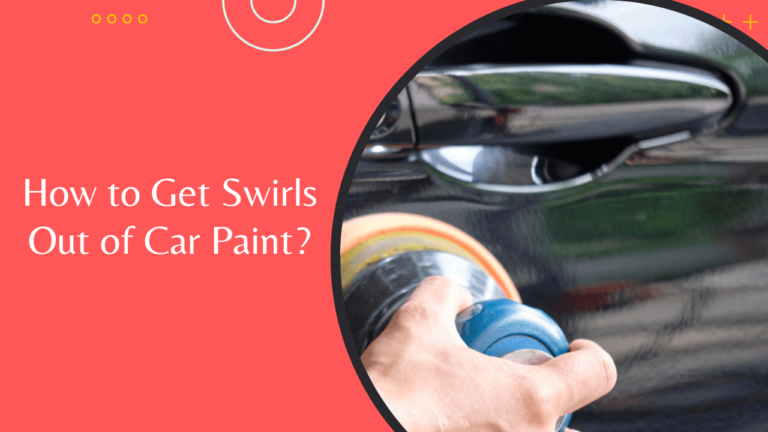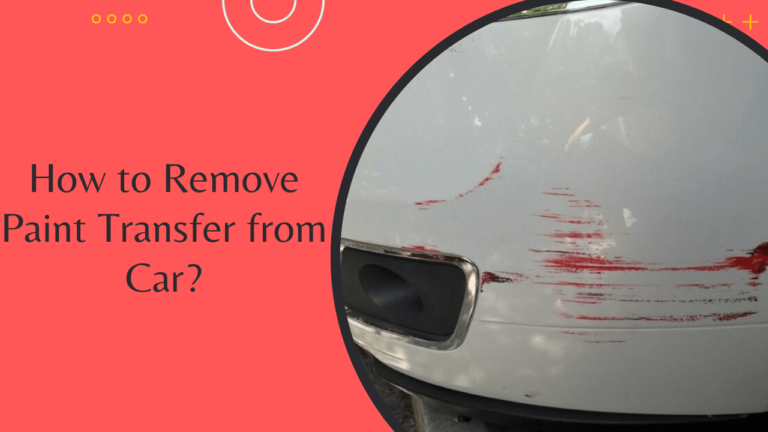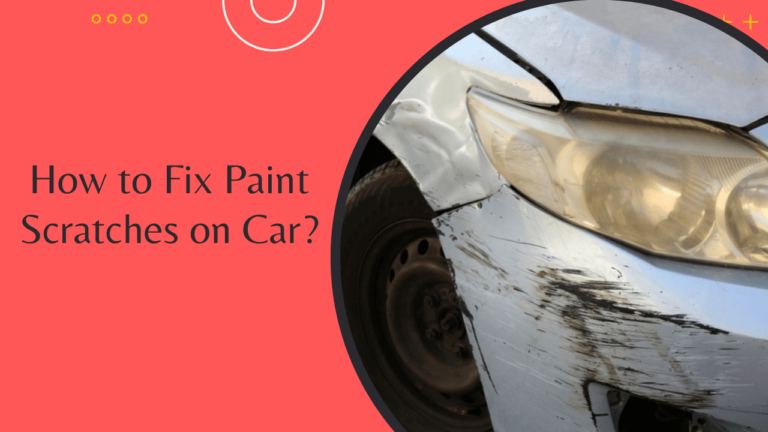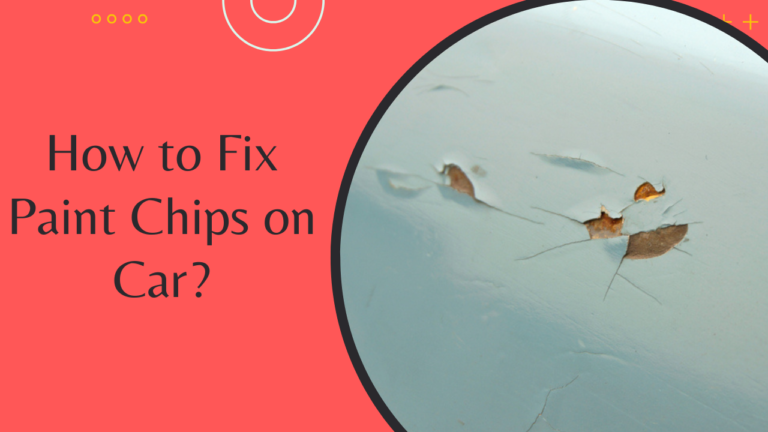How to Remove Hard Water Spots from Car Paint!
Introduction How to Remove Hard Water Spots from Car Paint
Hard water stains on your car’s paint are frequent and annoying, particularly in mineral-rich areas. They are ugly white spots or streaks on the paint that can grow obstinate if not addressed immediately. If left on the paint too long, the water minerals etch the clear coat, making removal tougher.
However, you can remove hard water stains without ruining your car’s finish using a few simple methods. I’ll show you all the practical and quick ways to remove fresh or set-in stains and make your automobile appear like new.
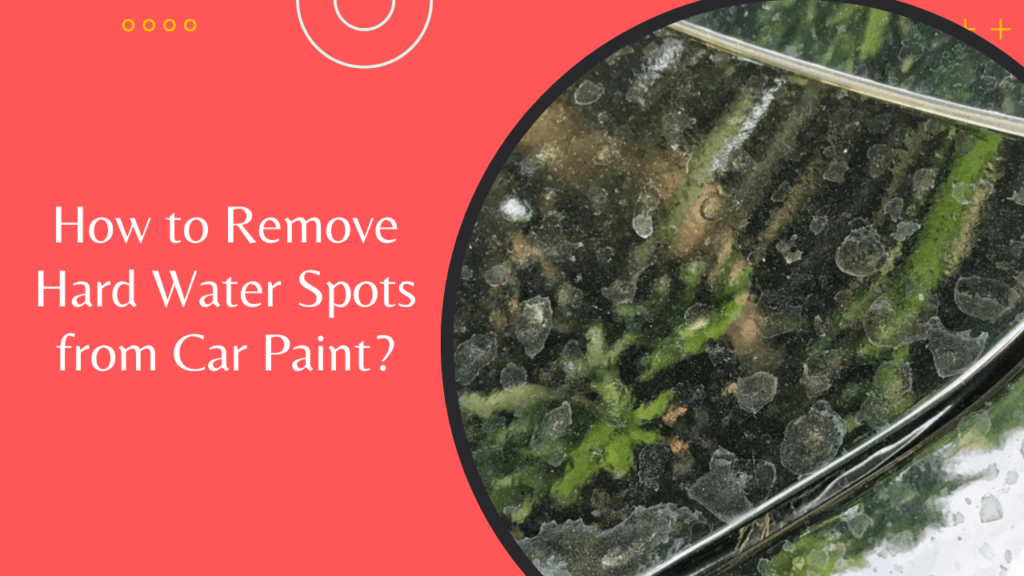
Why Do Hard Water Spots Form?
To eliminate these unpleasant spots, you must first understand why they arise. Calcium and magnesium are left behind when water evaporates from your automobile. These minerals generate chalky, white paint patches. These minerals can bind with paint and destroy clear coat if left unchecked.
The matter becomes complicated here. When regular washing doesn’t work, you need a more specialized method.
Step-by-Step Solutions for Removing Hard Water Spots from Car Paint
1. Quick Clean with Water and Microfiber Cloth
Start simple. With a little water and a microfiber cloth, early hard water marks can be removed. Here’s how:
Steps:
- Rinse your car thoroughly with clean water to remove any surface dirt.
- Dampen a microfiber cloth with water (distilled water works best to avoid adding more minerals).
- Wipe the spots gently in circular motions.
- Dry the area immediately to prevent new spots from forming.
Effectiveness: This works best for spots that haven’t had time to etch into the paint. It’s a quick, easy fix when you spot hard water marks right after a rain or car wash.
| Pros | Cons |
| Quick and easy solution | Only works for fresh spots |
| Doesn’t require chemicals | Can not work on older spots |
2. Use a Vinegar and Water Solution
Water won’t erase stains? Try a stronger solution. Solution: In hard water places, dissolve minerals using 50/50 white vinegar and water.
Steps:
- Mix equal parts vinegar and pure water in a spray bottle.
- Spray the affected areas with the solution.
- Leave for 2-3 minutes to dissolve minerals.
- Stains can be carefully removed using a microfiber cloth.
- Cleaning and drying with a clean towel.
Effectiveness: Vinegar is acidic, which helps dissolve the minerals causing the spots, making it ideal for more stubborn marks.
| Pros | Cons |
| Affordable and easy to make | Strong vinegar smell |
| Works on slightly older spots | Can need multiple applications |
3. Clay Bar Treatment
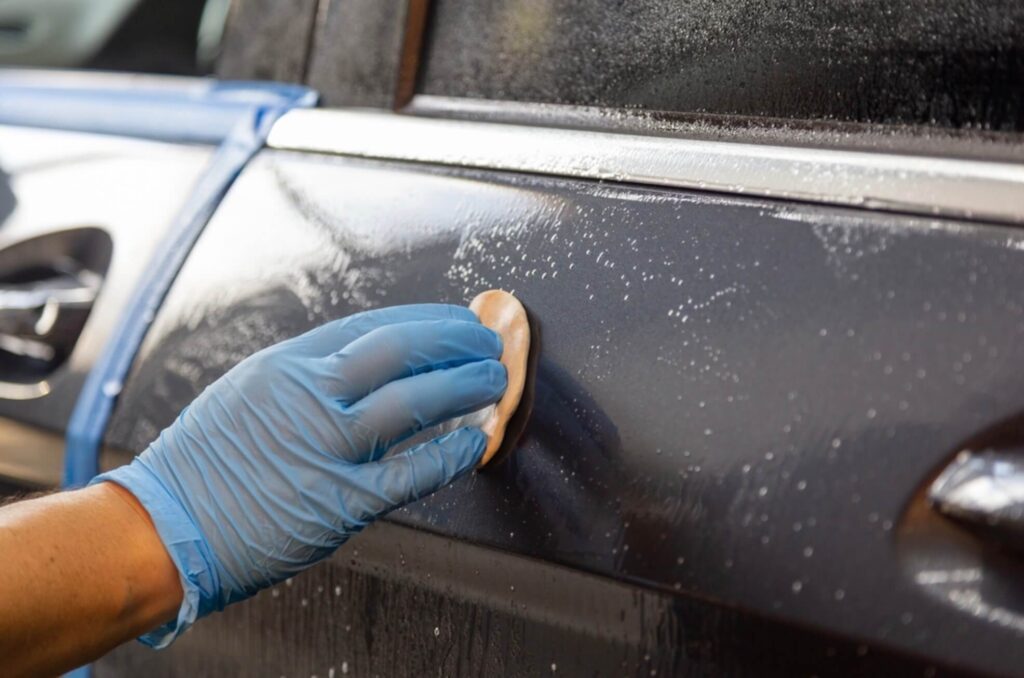
Water stains on your car’s paint? Use a clay bar. Clay bars are used to remove paint impurities such hard water minerals.
Steps:
- Wash your car thoroughly to remove dirt and grime.
- Lubricate the area using a clay bar lubricant or soapy water.
- Rub the clay bar gently over the affected areas. The clay will pick up the hard water spots as you go.
- Wipe the area clean with a microfiber towel.
- Finish with a quick wax to restore the shine and protect the paint.
Effectiveness: Clay bars are perfect for tougher, older water spots that have started bonding with the paint. They offer a deep clean without damaging the clear coat.
| Pros | Cons |
| Removes bonded water spots | Takes time and effort |
| Works on other contaminants too | Needs proper lubrication to avoid scratches |
4. Commercial Water Spot Removers
When DIY treatments fail, there are several commercial hard water spot removers. Special chemicals remove mineral deposits without damaging automobile paint with these solutions.
Steps:
- Choose a trusted water spot remover (Meguiar’s, Chemical Guys, or 3D Eraser Gel are popular options).
- Follow the instructions on the product carefully. Usually, it involves applying the product to a cloth or directly to the spots.
- Rub gently in circular motions to lift the spots.
- Rinse off with water and dry with a towel.
Effectiveness: Commercial removers are highly effective and designed for tough spots. They’re often your best option when vinegar or clay bars haven’t worked.
| Pros | Cons |
| Professional-grade effectiveness | Costs more than DIY options |
| Quick and easy | Can be harsh on sensitive paint if used incorrectly |
5. Polishing for Etched Spots
Regular cleaning won’t help if minerals have etched into the clear layer after resting too long. Polishing the surface is the best way to eliminate etching and restore paint quality.
Steps:
- Wash and dry the car to remove surface dirt.
- Use a polishing compound and apply it to the affected areas.
- Buff the area with a machine polisher or a foam pad using circular motions.
- Wipe off excess polish with a clean microfiber cloth.
- Apply a protective wax to seal the paint and prevent future damage.
Effectiveness: This method works best for serious cases where hard water spots have caused etching in the clear coat. It requires some skill but can fully restore your paint.
| Pros | Cons |
| Removes deep etching and scratches | Requires special tools and skills |
| Restores shine | Can be time-consuming |
Keep Water Spots Away from Your Car
You’ll want to prevent hard water stains after removing them. These precautions will help you avoid this issue:
1. Wax Your Car Regularly
A coating of wax protects paint from the environment. Water doesn’t stay on wax long enough to create stains.
| How Often | Effectiveness |
| Every 3-4 months | High – Helps prevent future water spots and adds shine. |
2. Use a Water Filter
Installing a water filter on your hose reduces hard water spots while washing your automobile at home. Water filters eliminate minerals for a spot-free rinse.
| Installation Cost | Effectiveness |
| $30 – $50 | High – Removes minerals from water, reducing spots. |
3. Dry Your Car Immediately
Water that air-dries on your automobile will leave hard marks. After washing or raining, dry your vehicle with a clean microfiber towel to avoid water evaporation and mineral buildup.
| Method | Effectiveness |
| Microfiber towel drying | High – Eliminates risk of water spots forming. |
Final Words
The correct tools and approaches defeat hard water stains. You have everything you need to remove difficult automotive paint marks, from vinegar and water to clay bar treatments and polishing. Remember to respond quickly before they etch into the clear coat. Maintenance like waxing and washing with filtered water can keep your automobile looking great.
These practical, expert-approved solutions can keep your automobile shiny and prevent hard water stains from destroying its paint.

